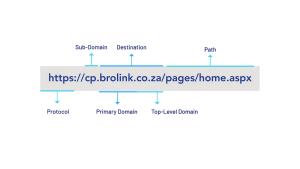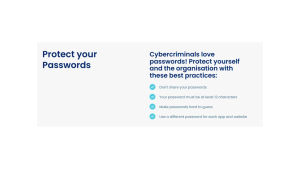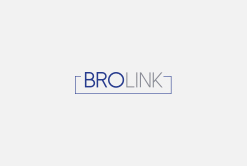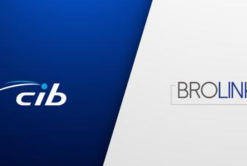
Become cybersafe and learn how to keep your Brolink account safe.

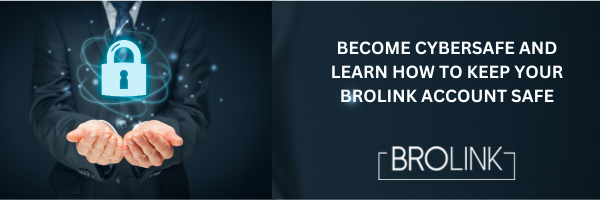
Stay safe online
Cybercrimes such as fraud, phishing and scams are an everyday reality and it’s important to stay informed and be alert to prevent yourself from becoming a victim. We’ve put together a useful guide to help you stay safe online.
Phishing
When is a message FAKE?
Phishing is when you are contacted out of the blue (without you requesting it) and are requested to provide personal information, participate in some activity, open an attachment or simply just click on a link. This can happen on email, WhatsApp, SMS, Facebook, LinkedIn or even over a phone call. The golden rule is to always think before you respond and never provide personal information including user IDs and passwords.
How to Spot a Fake or Phishing Email
Clicking on an unsafe link is all it takes for criminals to hack into and takeover your machine or online accounts. Did you know that many phishing attacks are so successful because they trigger our emotions and thereby suppress our critical thinking? Just 10 seconds of mindful pausing will reactivate your logical thinking brain – so slow down before reacting to any messages you did not expect and think before you click.
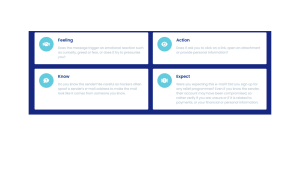
Example of a fake e-mail
The information highlighted with the blue flags indicates that it is fake.
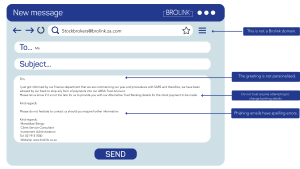
How to Spot an Unsafe Link
Knowing the difference between a safe and unsafe link can help you stay safe online. Don’t trust any links or attachments in emails or social media messages you were not expecting. Always hover over links in emails to see the actual link. If you understand the anatomy of a URL, you will be able to see the primary domain, which is the most important part of a URL as it tells you where the link will take you if you click on it.
Example of an unsafe link e-mail
The information highlighted with the yellow flags indicates that it is an unsafe link email.

Anatomy of a URL
For example, in the Brolink Services folder URL: https://www.brolink.co.za/services, the destination is brolink.co.za. In the URL: https://google.google-fake.com, the destination is google-fake.com or in the URL: https://verify.microsft.really.com/microsoft.com the destination is really.com and NOT microsoft.com.
To identify the destination that a URL is going to take you to, look at the part AFTER the https://. Now start before the first slash “/”, or if there is no slash start at the end of the URL and look at the parts before that point. The destination is the TWO last parts if the top level domain is .com or the THREE last parts if the top level domain is.co.za.
The diagram shows you that the destination is the primary domain and the top-level domain together.
